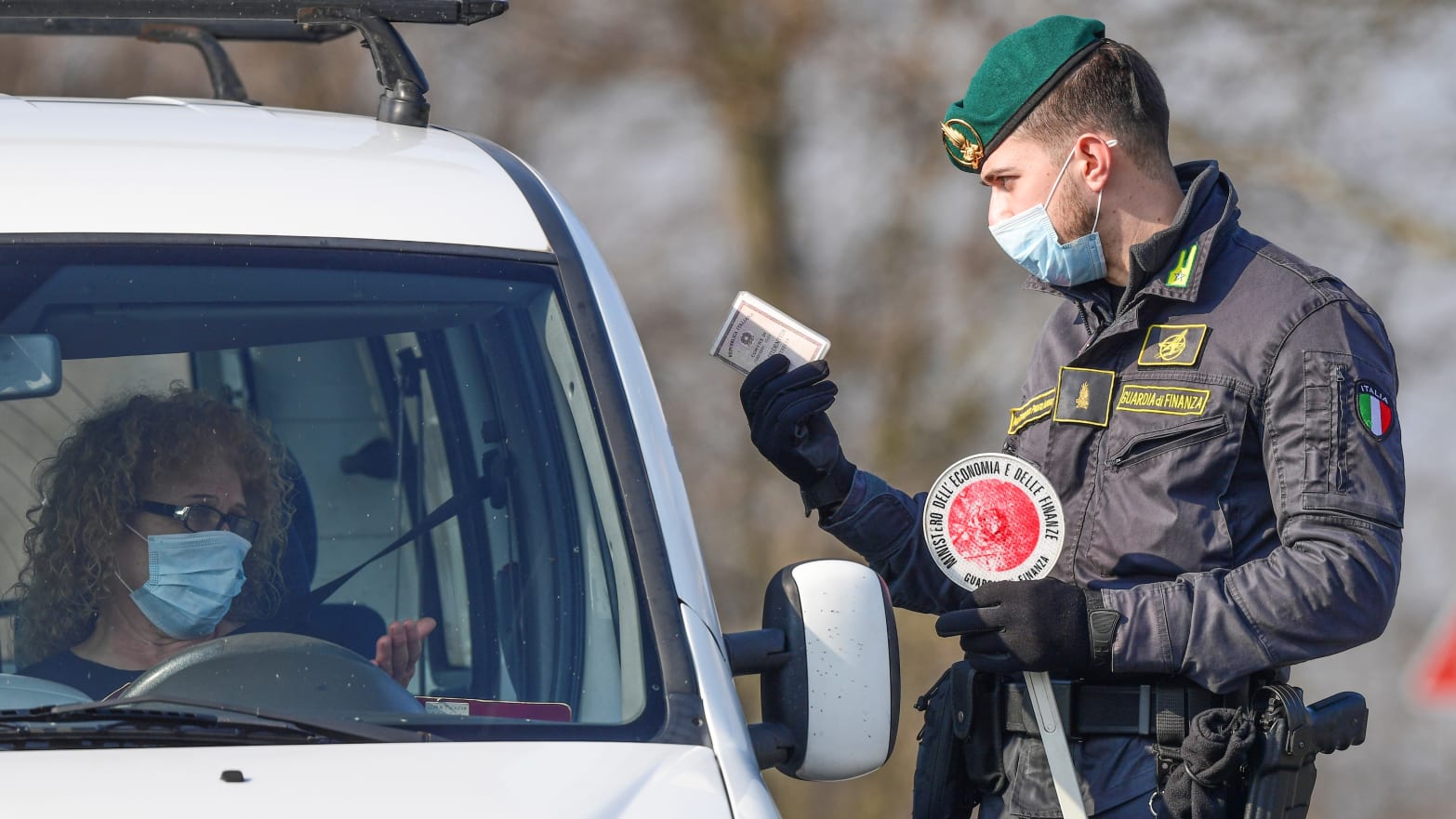ROME—Springtime in Rome seems to be the only annual event not on hold in Italy because of the coronavirus. Flowers and trees are bursting with life, birds are singing mating songs, and the sunsets are intoxicating, made even more so by the obvious drop in pollution. But in the two short weeks since Italy’s coronavirus epidemic jumped from three isolated cases in Rome to more than 3,800 across the country, Italy has gone through a collective crisis. And while it may take years to get over, it already has pulled the nation together.
The memes about Italians enjoying their aperitivo while everyone outside the country thinks this is zombieland have been replaced with advice tips on e-learning and how to cope with the suspension of schools and universities for “at least” the next two weeks.
Museums and tourist sites that were telling the world a week ago that Italy is still a safe destination are now filled with locals who haven’t been in them for years because of mass tourism. Never mind that the sites also are listing reduced hours and limited entrances after the prime minister announced that everyone needs to stay a meter (more than three feet) apart in public spaces.
Grocery stores are offering free delivery service to anyone over 65, the age bracket that has now been told to stay inside indefinitely. Neighbors are being neighborly, and even priests are making house calls so the elderly don’t have to leave home.
But as the crisis brings out the best in Italians, fear over getting the virus has been replaced by anxiety over when, how, and whether this crisis is going to end.
Expectations are that the country will enter a recession sooner rather than later, which, it must be said, might well have happened even without the outbreak. Cancellations in Rome for Easter, more than a month away, are nearly 90 percent, which has had a devastating economic impact on small hotels and tour companies.
The economy ministry announced a €3.6 billion stimulus package and massive tax breaks for companies that report a 25 percent loss in revenue. That will surely include anyone tied to tourism, which accounts for about 13 percent of the country's entire GDP. Mortgage payments and personal tax payments are being suspended in the red zone areas.
It helps little that the so-called “Wuhan of Europe” is in the wealthy northern Italian region, which has one of the highest per capita incomes in all of Europe. Much of the area’s industrial success is bolstered by strong supply chain ties to China, which have been strained as the outbreak worsens.
There are also real burdens on infrastructure in Italy that are, for the moment, far more acute. Hospitals in the north of the country are under what the health ministry now calls “severe strain” as health care workers succumb to the disease caused by the virus. Schools are even graduating nurses a year early to help with the growing shortage of caregivers. Northern Italian hospitals are borrowing beds from less affected regions to deal with the outbreak in what is starting to feel like whack-a-mole as the outbreak seeps into all regions of the country.
Italians, as Italians do, also are looking for someone to blame. When Prime Minister Giuseppe Conte confirmed that schools would be closed starting Thursday “at least” until March 15, many, including a technical team advising him, suggested that such a move was counterproductive if the population can still travel across the country freely. Trains running from Rome to Milan are virtually empty, but unsurprisingly those leaving Milan—near the hot zone—are full.
The panic is fed by routines that are settling in as if we were in war time. Every day at 6 p.m. the civil protection agency holds a televised press conference to update the grim statistics of the dead and newly infected. People stop what they are doing to listen to radios and gather around televisions in hopes the numbers will soon start to plateau and eventually go down. When they don’t, the natural reaction is to go to the grocery store and buy more canned goods and toilet paper.
“There is now a rush at 6:30 p.m. every day that has to be tied to the ‘war bulletin’ that gets sent out,” a grocery shop owner in Rome told The Daily Beast. “Sure, it’s good for business in the short term, but this isn’t sustainable.”
The daily bulletin includes the number of those who have recovered, too. But that number doesn’t seem to grow as fast as the newly infected. On Thursday, the new cases nearly topped 800 in a single 24-hour period, a dubious record no one wants to topple. As of Wednesday evening, 414 of the 3,858 infected people so far were listed as “recovered.”
The biggest question in the country is about the effectiveness of the quarantined areas as the virus spreads. One week ago, there were no cases south of Rome; now every southern province has at least one case which was introduced by someone who had been “in the north.” As with the Diamond Princess cruise ship, the now infamous “floating petri dish” in Japan where so many were infected and so much of the virus spread, Italians are starting to question why the lockdown of 10 communities in the northern regions wasn’t extended right away. Italians on the move have now introduced the coronavirus to a dozen countries or more, including highly vulnerable ones like Nigeria, which begs the question whether the lockdown zone is working the way it should.
Flights in and out of Milan, when they run, are hauntingly empty. Those in and out of Rome are slowing down, too—even though there are “only” 30 cases in the Lazio region where Rome is located. A new ordinance issued Wednesday by the Italian government now requires everyone to have their temperature measured before they board any flight in the country, no matter where it is going, which seems a little late considering the spread.
When Prime Minister Conte addressed the nation in a somber televised address Wednesday night, he told people they should stay calm and that Italy would “rise again” after this is over. “It's not the first time that our country faces a national emergency,” he said. “But we are a strong country that never gives up. It’s in our DNA… Everyone is called on to do their part.”
Even though the coronavirus crisis in Italy is less than two weeks old, a new sense of bizarre normalcy has already set in. The wine still flows across the country even if, in the red zones, people have to lift a mask to drink it. In the quarantine zones, people are already musing about a coronavirus baby boom nine months from now.
Life, even in the time of coronavirus, goes on.

